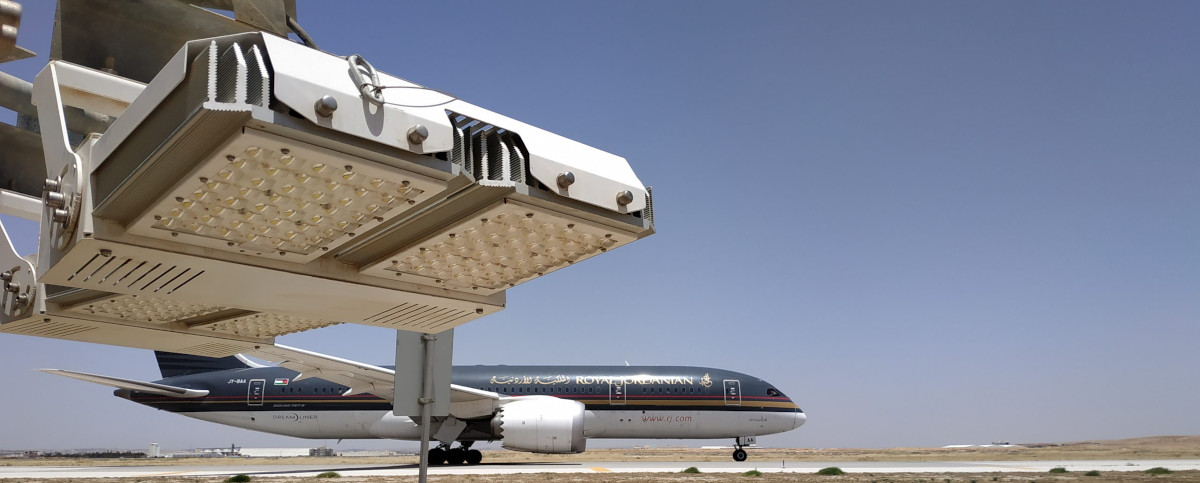Designing Market-leading Luminaires
| Company | Midstream Lighting |
|---|---|
| Date | 19.06.2020 |

 Designing or commissioning new luminaires can be a technical nightmare full of pitfalls and problems. So, who better to answer some of the questions we often get asked than our Technical Director, Paolo Corno. With years of experience in designing and delivering lighting solutions, he’s the industry expert.
Designing or commissioning new luminaires can be a technical nightmare full of pitfalls and problems. So, who better to answer some of the questions we often get asked than our Technical Director, Paolo Corno. With years of experience in designing and delivering lighting solutions, he’s the industry expert.
Paolo, what are the key things you think about when starting a new project?
The client. The client. The client.
If they’re in a specialised sector their needs can really vary. Airports are totally different from sports stadia – especially when it comes to lighting, believe me.
You need to understand what issues they are looking at and work closely with them to see if they’re the things that really need addressing. Simply selling them the same thing you’ve done for another company can mean you’re not really tackling what’s needed for them and can cause them problems that have to be fixed later.
You’ve also got to understand their business constraints. For example, if they don’t have the money to pay for the solution you suggest, you’ve done nothing for them at all apart from wasting their time. But if you know what’s what you can, more often than not, find a way around these things. I had one client whose budget was incredibly tight, but the problem incredibly big. When we factored in things like payback and reliability though, compared to other ‘traditional’ solutions, it was a ‘no-brainer’ and they got approval for the project as planned.
The next step is totally key. Create a draft project spec that includes input from all the areas of the business involved. And get them all to sign that off too.
What technical qualities do you think are key?
Firstly, delivering the correct light distribution that’s in the tech spec – on budget. We like to call it ‘efficiency through efficacy’. If you can’t get that right, the project has failed – big time.
You’ve also got to take into account things like the materials used. Does it need to be tough enough to withstand a harsh environment where things like corrosion can cause problems such as a port?
Infrastructure costs are highly important too. For example, if it’s a retrofit job, you can keep costs down by designing a solution compact and light enough to go on existing masts.
Making sure your solution is scalable and future-proof is important too. Your client will love you for it and make you their ‘go-to’ supplier in the future.
What tools and software do you use when designing a new luminaire?
There’s a lot of kit out there you can use. DIALux is the worldwide standard in lighting design software and you can get it for free in over 25 languages. You’ll also need to use 3D CAD, and thermal, optical, and lighting simulation kit too.
Having said all that, the most important we use at Midstream though is the brain! As they say, experience matters. And our team has more experience – and brains – that anyone else out there.
Who are your key players when it comes to delivering a project?
We’ve got Product Developers who are 100% devoted to creating totally new solutions or develop existing products to meet different challenges.
Then it’s the job of our designers to bring those solutions to life and make sure they deliver things like the right lighting distribution etc.
Project managers are needed too. It’s their job to keep the project focused and deliver it on time, budget, and spec.
And last, but not least at all, is the production team. They obviously deliver the finished product. But, thanks to their experience they can add value by giving feedback on the solution overall or by suggesting better, more efficient ways to manufacture the luminaires.
How and when should testing be done?
Any test you can do, at any stage, do it! Make your maxim ‘measure twice, cut once’. That’s what we do. We’ve got our own facilities to test prototypes. And, of course, we get any new lighting solutions tested and approved by third parties like Underwriters Laboratories, Oxytec, and Nemko. That’s not a nice-to-have. It’s a must – legally.
How long does it take Midstream to develop and launch a new product?
This is a ‘how long is a bit of string’ question. It depends on the product and who you are working with.
Here at Midstream, we allow six months for a totally new line and two months to repurpose an existing solution. However, that’s all down to the calibre of our teams. Again, brains and experience come into play. Other providers will usually take a lot longer.
What’s the biggest challenge when designing new luminaires?
The big one is making sure you 100% comply with all the regulations needed when you’re developing a product or using one in a new market. We’ve worked all around the world, so we’ve got that down to an art.
Contact
Wessex House
1 Chesham Street
London
United Kingdom
SW1X 8ND
- +44 (0) 207 584 83 10

